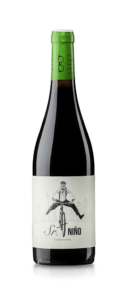If you’re passionate about the wine industry, you’ve likely heard of carbonic maceration wines. However, explanations are often complex, making it hard to understand what makes these wines so interesting and distinct from the ones we’re used to drinking. In this post, we’ll simplify and clarify what carbonic maceration is, how it impacts wines, and what makes them unique. Prepare your glass—our journey begins now.
Studies date the origin of carbonic maceration to 1934 in the French city of Narbonne. However, the Beaujolais region, located between southern Burgundy and northern Lyon, has brought fame to this winemaking technique. Initially, it was used to counteract the high acidity of wines in the area, resulting in easy-drinking wines with surprising red fruit aromas—unusual for red wines traditionally dominated by black fruit notes.
The Beaujolais AOC wasn’t particularly prestigious despite its long winemaking history. However, in the 1960s, the introduction of carbonic maceration revolutionized the region’s winemaking and, arguably, the French wine industry. The so-called Beaujolais Nouveau (young wines made with this technique) began to hit the market earlier than any other French wine. Since 1985, Beaujolais Nouveau has been officially released on the third Thursday of November, following short fermentations. These wines are immediately drinkable but have limited aging potential, best consumed within the year after the harvest.
To understand why these wines became so famous, it’s worth noting that Beaujolais has a vineyard area similar to Ribera del Duero. Since 1992, over 50% of the region’s wine has been sold as Beaujolais Nouveau made using carbonic maceration. The grape used for these wines is Gamay, which is known for its light body and high acidity. Despite this, Beaujolais wines sometimes exhibit unexpected body and tannic structure, as we’ll explain later.
Yes, it exists here too, but outside of Rioja, it hasn’t gained much attention. Fortunately, at Pradorey, as we’ll explain shortly, we’re preparing a genuine surprise that’s sure to intrigue you. You’ll run out of excuses not to visit us!
There are two primary methods, both aimed at creating an environment in the tank that is low in oxygen and rich in carbon dioxide.
The first method, predominantly used in France, involves placing whole grape clusters into a tank. The weight of the grapes causes the lower clusters to crush, releasing juice that begins fermenting due to the yeast on the grape skins. At this point, the tank is sealed, creating an atmosphere with less than 1% oxygen and high levels of carbon dioxide. This triggers carbonic maceration in the intact grapes.
The second method, common in Rioja, involves crushing the grapes at the start of fermentation. The fermentation begins with the natural yeast on the grapes, but the tank is left unsealed. The atmosphere remains low in oxygen and high in carbon dioxide, though the proportions differ, leading to slightly different results.
Once alcoholic fermentation is complete, the free-run juice is transferred to another tank for malolactic fermentation. The yield from carbonic maceration is lower than from traditional methods—about 0.5 liters of wine per kilogram of grapes compared to 0.7 liters. The remaining skins and seeds are pressed to extract additional juice. In regions like Beaujolais, this press wine is often blended back into the wine to add body.
These wines are fresh and intensely fruity.
In the closed-tank method, the wines are dominated by red fruit aromas reminiscent of strawberry candies, lollipops, or nostalgic treats from childhood.
In the open-tank method, the wines are also fruit-forward but lean more towards black fruit aromas than red. Both styles are surprising, but the closed-tank method produces wines that are bolder and more unconventional.
The grapes must be in perfect condition when placed in the tank. Otherwise, fermentation could start in the collection boxes or baskets as juice accumulates. For this reason, these wines always require manual harvesting. Did you know that machine harvesting is legally prohibited in Beaujolais?
In recent years, some wineries have experimented with barrel aging for carbonic maceration wines, aiming to combine their fruitiness with the aging potential of traditional methods. This technique is challenging, but early results have been promising.
Ribera del Duero is not a region typically associated with carbonic maceration, but at Pradorey, we began experimenting with this technique in 2015. Initially, it was a learning exercise, but it revealed a new path worth exploring—a way to express

By 2018, after three years of learning, we were ready to take the leap. We selected extraordinary grapes from our organic Salgüero vineyard, hand-harvested them carefully, and picked them slightly earlier than the rest of the crop. Using theclosed-tank method, we found that the free-run juice had enough character to stand alone. We transferred it to centuries-old clay amphorae, where it completed malolactic fermentation and underwent a one-month aging process. The goal was to enhance the fruitiness even further through the amphora’s natural micro-oxygenation.
The result is Sr. Niño, a wine that we believe could mark a turning point for Ribera del Duero, just as we did with Roble, Lía, and El Cuentista. This limited-edition wine—only 15,000 bottles—will be released in just a few days. With its bold, disruptive image, Sr. Niño embodies the innovative spirit that has always been part of Pradorey’s DNA.
Are you ready to share your experience with us?
¿Te ha gustado este artículo?